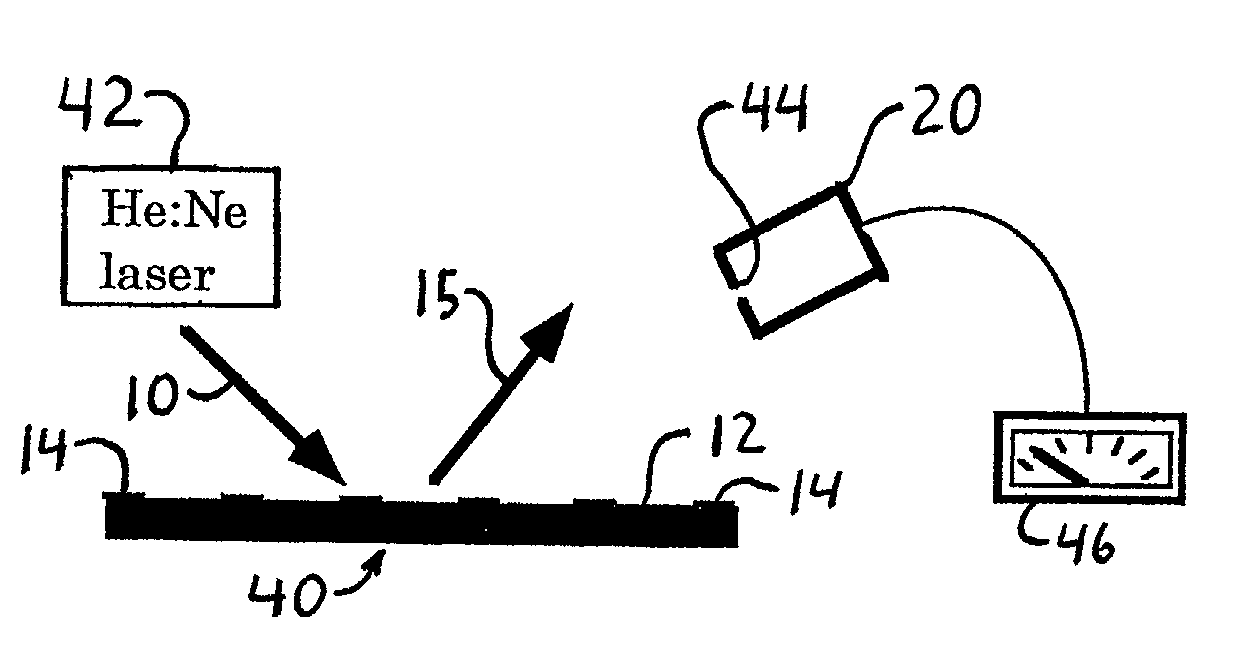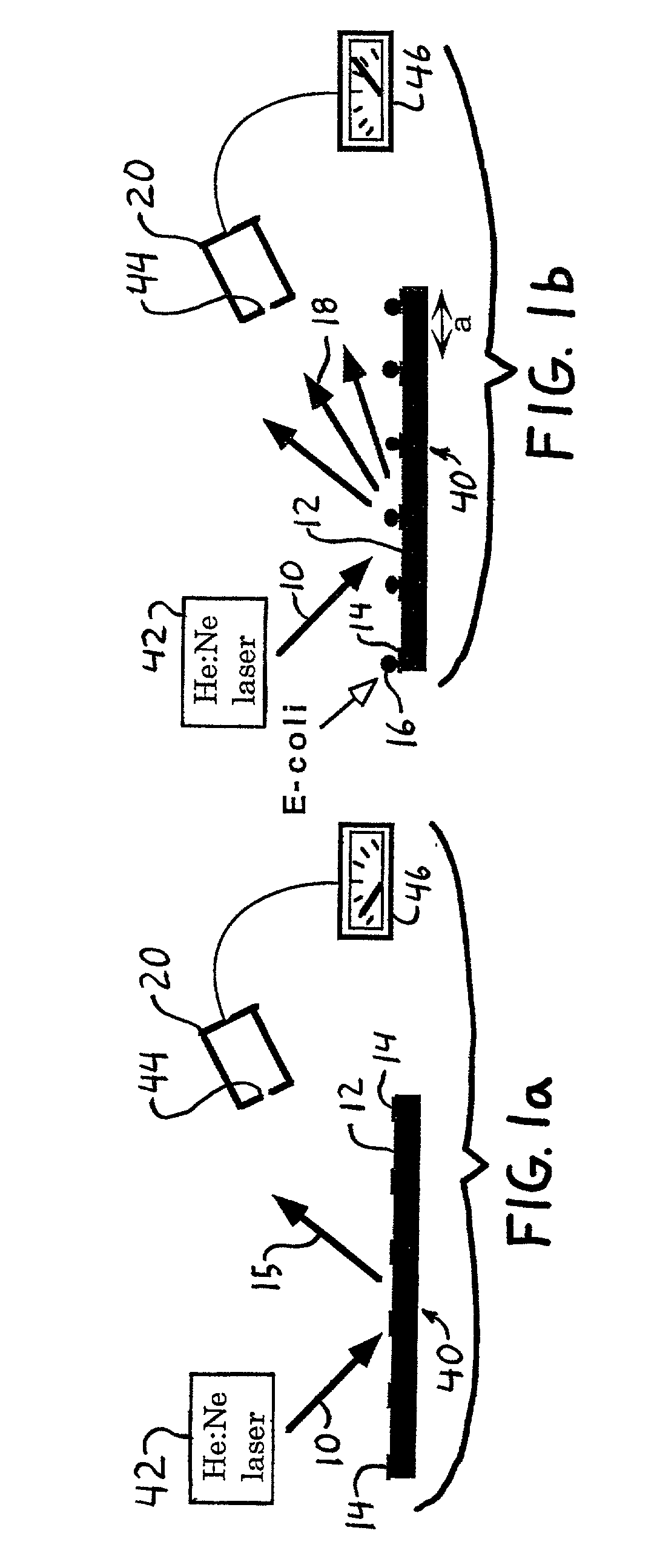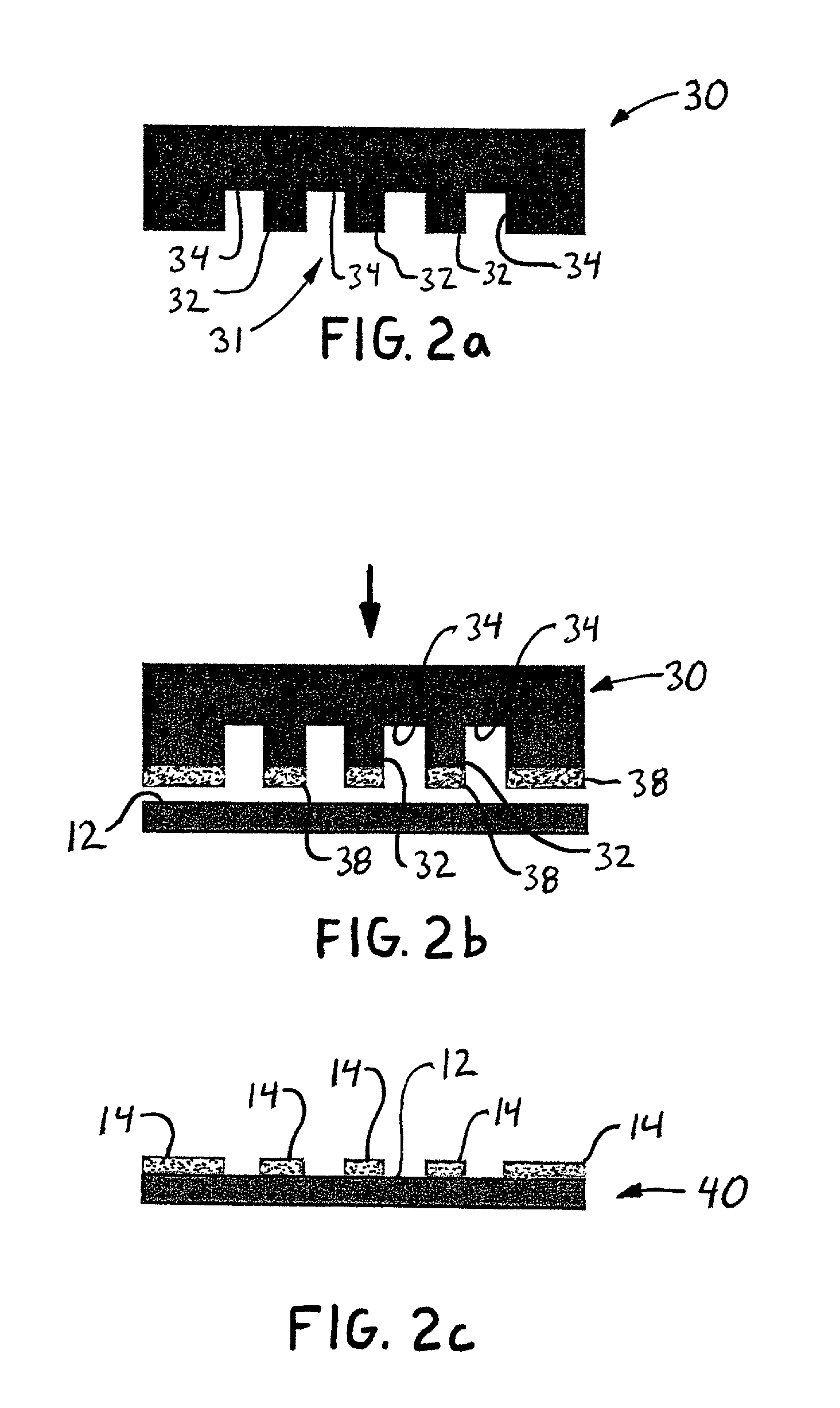Diffraction-based cell detection using a micro-contact-printed antibody grating
a micro-contact printing and antibody grating technology, applied in the field of biological sensor production, can solve the problems of scale-up of fabrication, inability to batch read samples, and disadvantages of other prior art techniques,
- Summary
- Abstract
- Description
- Claims
- Application Information
AI Technical Summary
Problems solved by technology
Method used
Image
Examples
Embodiment Construction
[0028] Production of Master for Casting the Stamp
[0029] A silicon master (not shown) was generated using contact photolithography under a method described in more detail in co-pending U.S. patent application Ser. No. 1BA, filed Jan. 6, 2000, and entitled "PATTERNED PROTEIN LAYERS ON SOLID SUBSTRATES BY THIN-STAMP MICRO-CONTACT PRINTING", Atty. Docket No. CRFD2254, and described in U.S. Provisional Application No. 60 / 115,136, filed Jan. 7, 1999, having the same title, both assigned in their entirety to the same assignee as herein, and the disclosures of which are incorporated herein by reference. The master used in the Example was configured to enable the production of a cast elastomer stamp for printing a plurality of equally-spaced, parallel 10-.mu.m wide lines with 30-.mu.m wide spaces in a grating-like pattern. The period of this grating (i.e., the distance between adjacent lines) was not optimized for the wavelength of the laser used in the Example. However, such optimization of...
PUM
| Property | Measurement | Unit |
|---|---|---|
| width | aaaaa | aaaaa |
| width | aaaaa | aaaaa |
| width | aaaaa | aaaaa |
Abstract
Description
Claims
Application Information
 Login to View More
Login to View More - R&D
- Intellectual Property
- Life Sciences
- Materials
- Tech Scout
- Unparalleled Data Quality
- Higher Quality Content
- 60% Fewer Hallucinations
Browse by: Latest US Patents, China's latest patents, Technical Efficacy Thesaurus, Application Domain, Technology Topic, Popular Technical Reports.
© 2025 PatSnap. All rights reserved.Legal|Privacy policy|Modern Slavery Act Transparency Statement|Sitemap|About US| Contact US: help@patsnap.com



